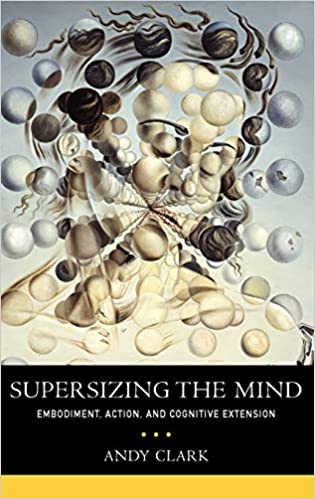Situated Cognition
Embodied // Extended
A talk for Sensory Engagement Lab



Brainbound
The (nonneural) body is just the sensor and effector system of the brain, and the world is just the arena in which adaptive problems get posed and in which the brain–body system must sense and act.
All human cognition depends directly on neural activity alone.
Extended
Includes inextricable tangles of feedback, feed-forward, and feed-around loops: loops that promiscuously criss-cross the boundaries of brain, body, and world. The local mechanisms of mind are not all in the head.
Cognition leaks out into body and world.
"This matters because it drives home the degree to which environmental engineering is also self-engineering."
metabolic cost
energetic expenditure
An ecological control system is one in which goals are not achieved by micromanaging every detail of the desired action or response but by making the most of robust, reliable sources of relevant order in the bodily or worldly environment of the controller.
Part of the “processing” is taken over by the dynamics of the agent-environment interaction, and only sparse neural control needs to be exerted when the self-regulating and stabilizing properties of the natural dynamics can be exploited.
morphological computation
Not all the processing is performed by the brain, but certain aspects of it are taken over by the morphology, materials, and environment [yielding] a ‘balance’ or task-distribution between the different aspects of an embodied agent
transparent equipment
At this point, the extrabodily world becomes poised to present itself to the user not just as a problem space (though it is clearly that) but also as a problem-solving resource
One way in which evolved agents truly inhabit, rather than simply control their bodies may be usefully understood in terms of a profound fit between morphology and control.
rapid saccades
spontaneous scanning eye movements
Even when repeated saccades are made to the same site, very minimal information is retained. Instead, repeated fixations provide specific items of information “just in time” for use.
Eye movements, head movements, and memory load trade off against each other in a flexible way.
Principle of Ecological Assembly (PEA)
The canny cognizer tends to recruit, on the spot, whatever mix of problem-solving resources will yield an acceptable result with a minimum of effort.
The recruitment process marks no special distinction among neural, bodily, and environmental resources
Extentions as Amputations
Marshall McLuhan
Any invention or technology is an extension or self-amputation of our physical bodies, and such extension also demands new ratios or new equilibriums among the other organs and extensions of the body.